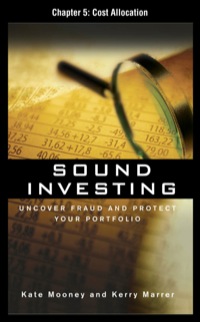Question
This project consists of 3 parts. You are to act as a financial analyst and need to write a report regarding a United States Publicly
This project consists of 3 parts. You are to act as a financial analyst and need to write a report regarding a United States Publicly traded company (you select the company). The calculations for ratios must be based on the formulas provided in the assigned textbook. Please use the Campbell Soup Company Comprehensive Case report in the textbook as a guide for this assignment/project. (book case found here Subramanyam, K.R. (2014). Financial statement analysis (11th ed.). New York, NY: McGraw Hill Education. ISBN: 9780078110962)
1. Executive summary. Brief summary focused on important analysis results; it launches the analysis report.
2. Analysis overview. Background material on the company, its industry, and its economic environment.
3. Evidential matter. Financial statements and information used in the analysis. Please note that financial statement data used in the analysis must be for the last 5 years. This includes ratios, trends, statistics, and all analytical measures assembled.
Short-term liquidity. Ability to meet short-term obligations.
o Current ratio o Acid-test ratio
o Accounts receivable turnover
o Inventory turnover
o Days sales in receivables
o Days sales in inventory
o Approximate conversion period
o Cash to current assets
o Cash to current liabilities
o Working capital
o Days purchases in accounts payable
o Average net trade cycle
o Cash provided by operations to average current liabilities
Capital structure and solvency. Ability to generate future revenues and meet long-term obligations.
o Total debt to equity
o Total debt ratio
o Long-term debt to equity
o Equity to total debt
o Fixed assets to equity
o Current liabilities to total liabilities
o Earnings to fixed charges
o Cash flow to fixed charges
o Times Interest Earned
Return on invested capital. Ability to provide financial rewards sufficient to attract and retain financing.
o Return on net operating assets-(RNOA)
o Return on common equity-(ROCE)
o Return on long-term debt and equity
o Equity growth rate
o Disaggregation of ROCE
o Disaggregation of RNOA
o Return on Total Assets
o Return on Common Equity
Asset turnover. Asset intensity in generating revenues to reach a sufficient profitability level.
o Sales to cash and equivalents
o Sales to receivables
o Sales to inventories
o Sales to working capital
o Sales to fixed assets
o Sales to other assets
o Sales to total assets
o Sales to short-term liabilities
o Cash turnover
o Account Receivable Turnover
o Inventory Turnover
o Working Capital Turnover
o Fixed Assets Turnover
o Total Assets Turnover
Operating performance and profitability. Success at maximizing revenues and minimizing expenses from operating activities over the long run.
o Gross Profit Margin
o Operating Profit Margin
o Net Profit Margin
Forecasting and valuation. Projection of operating performance, ability to generate sufficient cash flows to fund investment needs, and valuation.
4. Assumptions. Identification of important assumptions regarding a companys industry and business environment, and other important assumptions for estimates and forecasts, including its business strategy.
5. Crucial factors. Listing of important favorable and unfavorable factors, both quantitative and qualitative, for company performanceusually listed by areas of analysis.
6. Inferences. Includes forecasts, estimates, interpretations, and conclusions drawing on all prior sections of the report.
Step by Step Solution
There are 3 Steps involved in it
Step: 1

Get Instant Access to Expert-Tailored Solutions
See step-by-step solutions with expert insights and AI powered tools for academic success
Step: 2

Step: 3

Ace Your Homework with AI
Get the answers you need in no time with our AI-driven, step-by-step assistance
Get Started


